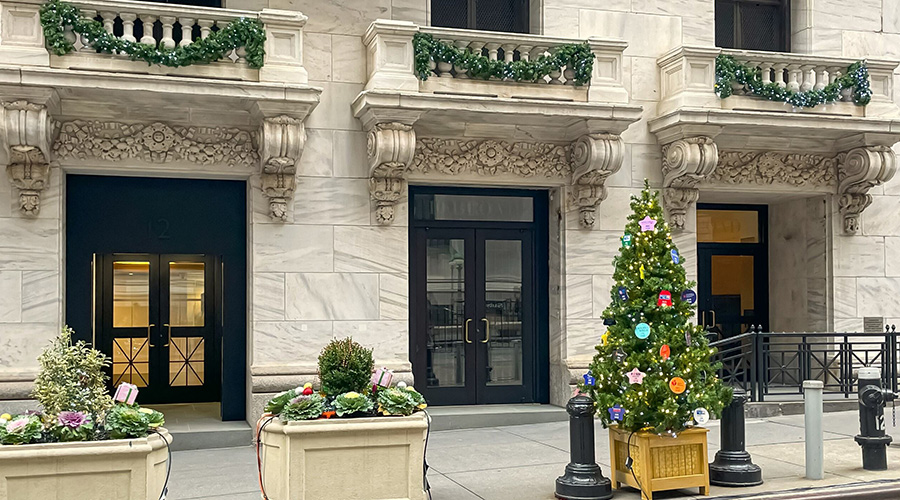Technology advances offer managers options in creating systems to protect facilities and occupants
The old saying goes: It’s better to be safe than sorry. In a post-Sept. 11 America, that phrase undoubtedly has entered the minds of many maintenance and engineering managers as they examine, and possibly update, their security systems. Many managers probably will worry about the threats to their facilities’ security, but new technology can empower a manager to make the best decisions possible.
Managers have reason to be excited about the seemingly endless options for protection, particularly because these options can now work together in an integrated internet-protocol (IP) system, creating a unified, secure building.
While integrated IP systems wouldn’t necessarily be considered new, managers in institutional and commercial facilities have started using integrated systems for security more than ever. Now, fire-alarm systems, telephones, the internet, and closed-circuit television (CCTV) systems all can function together.
Integrated IP systems are also becoming more common in K-12, higher education, health care, and government buildings because officials have realized the value of having all of their security on one system and flexibility in monitoring that system.
This type of system allows managers in a large district to simultaneously watch activity in all of the district’s schools from a central location. Because all components are on one system, anyone with a valid user name and password can access it via the Internet. With an IP-based system, user names and passwords can be tiered to for different levels of access to the system.
Security of the Future
Five years ago, biometric systems were seen as the way of the future. Many managers were using retina scanners, hand scanners or fingerprint security. But these devices are perceived to be expensive, and they can provide false reads. Even on the devices on which the sensitivity can be adjusted, problems remain.
Managers often bring biometrics into the access-control environment because of ease of use. Employees don’t have to worry about losing a card or remembering a numbered combination. For these reasons, some managers have opted to use biometrics. The price point on biometrics also continues to fall, making them a more accessible option.
In the past few years, many managers have looked for an automated solution to replace security guards, but most have realized that camera surveillance and access control, along with guards, provide the best level security.
If a guard is required to monitor the images from multiple cameras, managers can program a digital video recorder (DVRs) to sense movement and switch to the camera that monitors the area in which motion is detected.
Pros, Cons and Concerns
As with any system, an integrated IP system comes with advantages and disadvantages. One of the biggest concerns many managers have is whether the backbone of their network can handle the large increase in bandwidth required. But many managers realize that operational benefits of an integrated IP system can justify the investment to make sure the backbone can handle the added bandwidth.
Another concern is data storage. Large hard drives are required to store the data from all system components . But as most industries are moving toward digital equipment, they also realize the need for larger hard drives.
As the amount of data grows, managers have begun storing data offsite locations managed with companies specializing in data storage. This tactic might seem strange to managers who have used analog systems, which require information to be kept onsite.
Some managers initially are wary about the cost of an integrated IP system, but they have become less apprehensive about its cost because of the operational savings it can provide. For new construction, the systems generally are not as cost-prohibitive as they would be for a renovation. Because it is more cost-prohibitive during a renovation, many companies come to a crossroads at which they must decide to upgrade an existing system or start over.
Compared to IP cameras, analog cameras offer a variety of styles and are still most widely available. But IP cameras offer better images with higher resolution and more flexibility, allowing users to e-mail video images for consultation. In a large organization with many facilities, insurance companies often prefer, and in some cases demand, IP systems. It is not uncommon for them to expect the same level of security company-wide.
Design and Maintenance
If a manager decides to use an integrated IP system or is upgrading an existing one, a collective team of a security consultant and in-house engineering and maintenance departments should work together to ensure proper design and smooth installation. The established team should continue to work together to adjust the system as needed.
Generally, organizations convene user meetings to discuss the system and its options. These meetings are mission-critical because without them, managers are left with a generic design and, perhaps, a poorly secured building. With these meetings, team members can configure the system in order to meet the specific security needs of the individual building.
After the system is up and running, it is also easier to maintain. With hardwired systems of the past, if one portion of the system failed, the entire system could be in jeopardy. Much like an string of holiday lights with one bulb out, technicians first had to find the burned-out light, then replace it. Integrated IP systems have the ability to self-diagnose, which means they can tell the technician which part of the system has failed. Also, the rest of the system can continue running while a technician fixes the problem.
For companies that are uncertain about which security system to use, a security assessment might help. The assessment gives the manager a detailed written report that takes into consideration many factors, such as building location, levels of crime and trends in security for similar facilities. This information will help the manager to determine the scope of the system needed.
Ultimately, a security system should make employees and visitors feel safe and comfortable. For a company with facilities in many areas, each facility could have the same core system, but the components of that system should vary, depending upon the size and needs of each facility.
Amy Raber is a senior project manager for Smith Seckman Reid, a leading engineering and medical communications consulting firm with more than 420 employees in nine offices nationwide. She has more than 10 years of communications experience, with expertise in low-voltage design. Matt Thrasher is a project manager for the firm. He has more than 10 years of communications and security experience, with expertise in low-voltage design.
Spotlight: SIA
Formed in 1969, the Security Industry Association (SIA) provides its members with a full-service, international trade association promoting growth, expansion, and professionalism within the security industry by providing education, research, technical standards, representation, and defense of our member's interests. SIA has over 300 member companies representing manufacturers, distributors, service providers, and integrators. SIA members are involved in several market segments such as, CCTV, access control, biometrics, computer security, and fire/burglar alarms.
For more information, visit www.siaonline.org
|
Related Topics:











